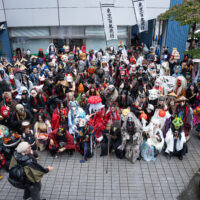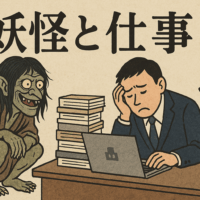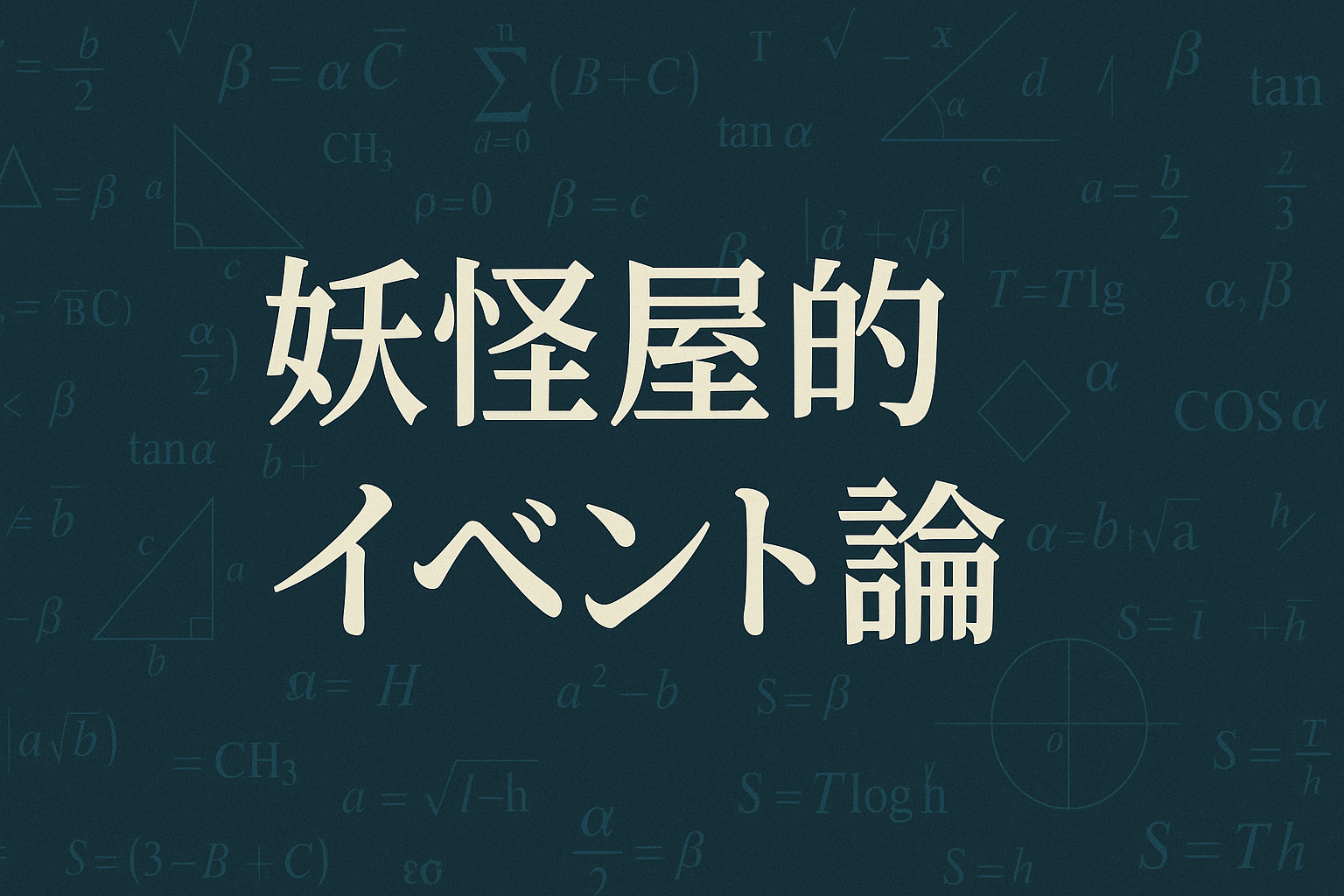
A little about Toriyama Sekien
Hello. This is Yokai-ya. It's been a while since I've written an article myself.
Today, I would like to talk a little about Toriyama Sekien, a legend of yokai painting who had a huge impact on the world of yokai, as an output of reading "Making Kaii" by Takatoshi Kiba. I will also include a link at the end.
Who is Toriyama Sekien?
Toriyama Sekien was a kind of pen name, his real name was Sano Toyofusa. He was a town painter of the Kano school who studied under Kano Shushin and Gyokuen, and his pupils included Kitagawa Utamaro and Koikawa Harumachi (Kitagawa Utamaro knew him!). His representative work is Gazu Hyakki Yakou (Night Parade of One Hundred Demons), which has been imitated by many monster painters and ukiyo-e artists, and even the famous Mizuki Shigeru based many of his monster paintings on Sekien's. He was so popular at the time that he was even written a poem by the kyoka poet Ota Nanpo.

Cultural figures around
- Haiku: Toryū Soenshi
- Kyoka (comic poem): Oota Nanbo, Akerakanko
- Confucianism: Hayashi Bohaku, Chiba Unkaku

A distinguished group! He was surrounded by ultra-intellectuals. By the way, the reason I listed the surrounding cultural figures is because the elements of the aforementioned surrounding cultural figures are strongly reflected in Toriyama Sekien's illustrations. In his postscript to Gazu Hyakki Yakou (a postscript-like thing by the author)
"Poetry is something that speaks out of the human heart, but painting is like a silent poem, with form but no sound. All of these things arouse emotion and provoke feeling."
But basically,
"A painting is poetry without a voice, and poetry is a painting with a voice. Both are the same source of inspiration."
This message is conveyed in the work, and it is clear that the content is in fact a creative work in which poetry and paintings are closely intertwined (it is not just paintings, but also has a little song-like story attached to it). It seems that in order to understand Toriyama Sekien, it is necessary to know about these cultural figures around him and the cultural background and activities that formed the foundation for them.
Is this actually an inside joke?
As Toriyama Sekien wrote in his postscript, his illustrations are "not just for children to enjoy," and his works contain a lot of playfulness that "messes" with the relationships between people around them. Some of his works contain origins of monsters that make you go, "Eh? Is that so?", so I'd like to introduce them a little.
- Fire snake monk → Hemamushi monk in word play
- Dorotabo → From the kyoka poet Dorotabo Yume-nari and the proverb "hit the muddy field with a stick"
- Bincho → He made Koikawa Harumachi (his apprentice) into a monster
- Dust Tomb Monster King → Tsurezuregusa "The more there is, the more the writing on the writing wheel looks good, and the more dust there is in the dust tomb."
- Bunsha Youhi → Same as above
Dorotabo is a fairly well-known yokai, so even people who like yokai might be wondering, "Huh? Really?" To those outside the circle, it's just a yokai that moans, "Give me back my rice fields!" I had inadvertently wondered if there was some kind of folklore that sounded similar to this, but in reality, it's just an inside joke.

A culture of playing with fiction
In the late Edo period, what were once mere rumors and phenomena were given new information by artists and cultural figures such as Toriyama Sekien, and were specialised into fiction (fiction) and enjoyed as entertainment. Hmm? Now, try to put this in modern terms. "Dramatising and expanding on rumors and mysterious phenomena" - aren't we still enjoying doing similar things today? Creative cosplay, collage images, manga, anime, creative ghost stories. There are many, but it feels like they are at the root of Japanese culture. The "inside jokes" I mentioned earlier are still popular today.
I think that's exactly what the anime series Insanity Reasoning, which started airing in January 2020, is like. (It also features monsters.) I won't go into the storyline here, though, as it would be a spoiler.

What kind of person was he after all?
Toriyama Sekien. I could sense that he was a man of outstanding playfulness, imagination, and creativity, but in the end, I was only able to scratch the surface of what kind of person he was. Hmm. I still have a lot to learn, so I'd like to go deeper and deeper so I can talk a little more.
Next time I'll talk about the different types of drawings. Look forward to it!
reference
"Creating Mystery" by Takatoshi Kiba
https://www.amazon.co.jp/dp/490965822X/ref=cm_sw_em_r_mt_dp_U_aJhMEb1JEDVTH
Anime fictional reasoning
https://kyokousuiri.jp/








No comments yet.